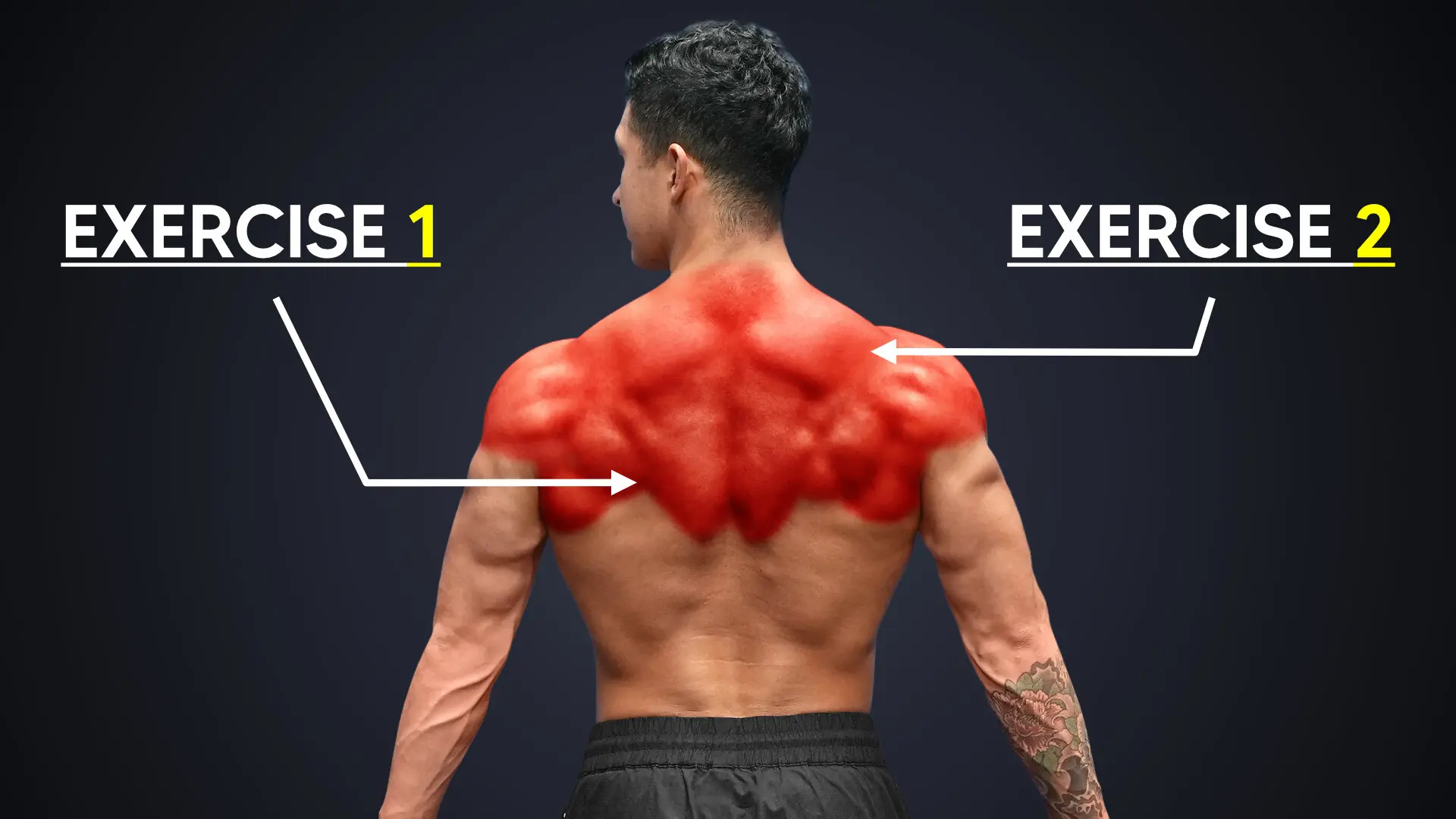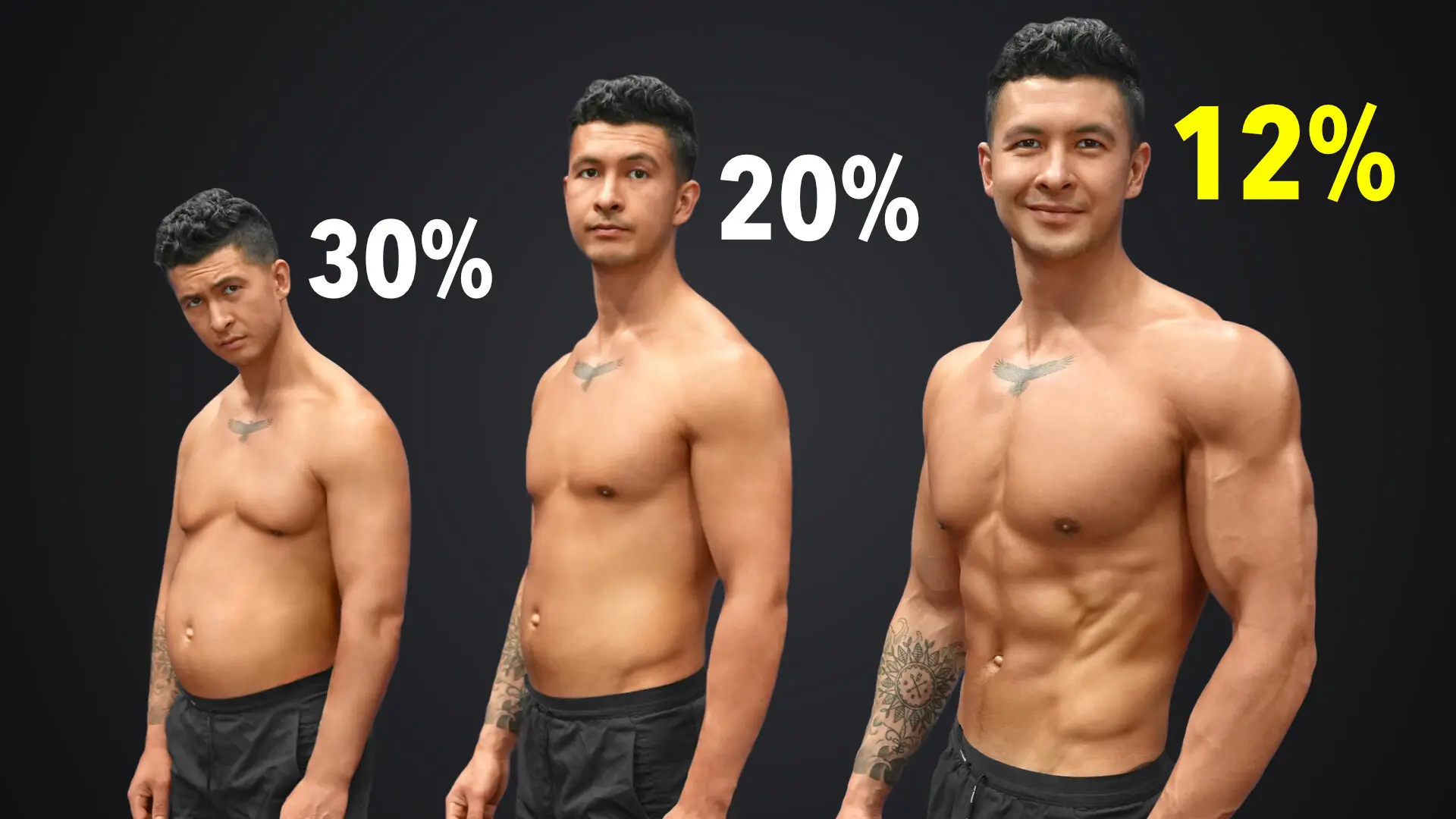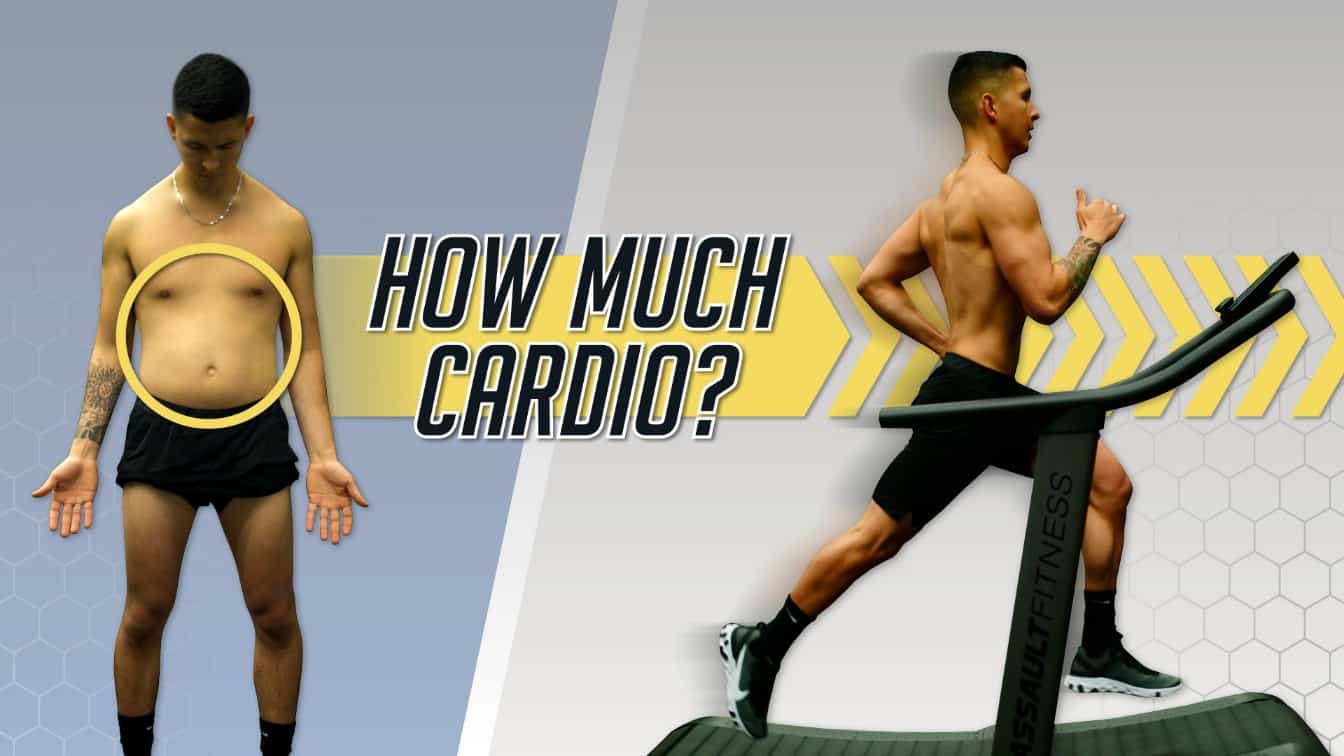
How Much Cardio Should You Do To Lose Belly Fat? (4 STEP PLAN!)
Stuck with stubborn belly fat? In this article, I show you exactly how much cardio you should do to lose belly fat so you achieve your dream physique.
Wondering how much cardio to do to lose belly fat? Well, here's the truth. Most people seeking to strip off that belly fat approach their cardio routines the wrong way. They fail to account for the various metabolic adaptations they experience as:
- They lose weight AND
- Their cardiovascular fitness improves
...Throughout the weeks and months of their diet. Which inevitably leads them to fat loss plateaus. This is problematic. Why? Because the belly fat is typically one of the last regions that your body will prioritize stripping off fat from! Your body, instead, prioritizes fat loss from other less stubborn areas first. As a result, most people end up plateauing before the fat loss has had a chance to really prioritize this region and burn a significant amount of fat from this area. And end up stuck.
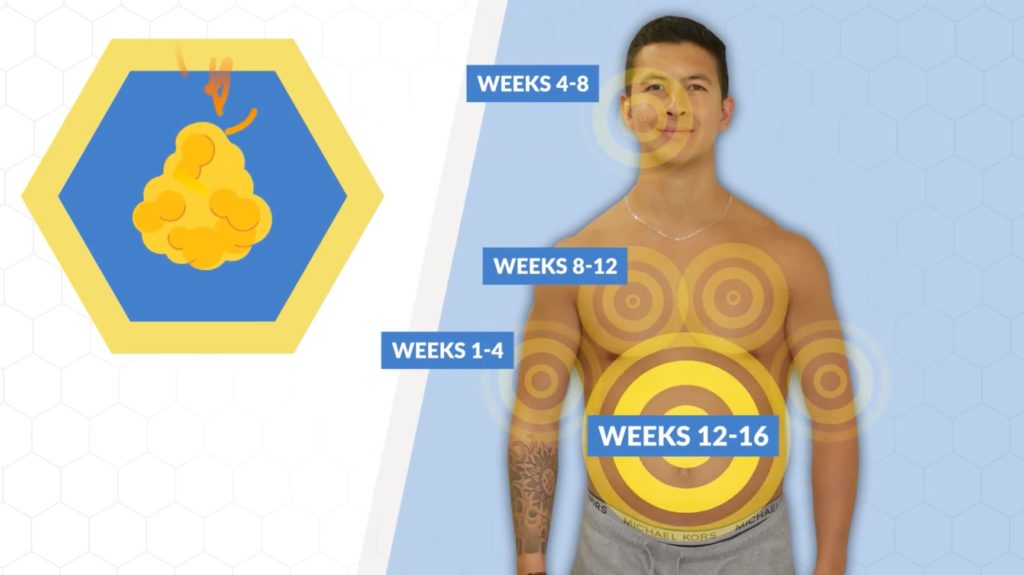
Want to hear some good news? By crafting and implementing the right cardio plan, you will be able to effectively use it as a tool to break through any plateaus you encounter along the way. And you'll continue doing so till your body has stripped off enough fat from other areas to the point where it now prioritizes stripping off fat from the belly.
How exactly can we do this though? Well, let’s first take a look at the problems we face when it comes to cardio and fat loss.
By the way: these are the exact key points (plus more!) accounted for in every single BWS program, no matter if it is a home-based or gym-based routine. I’ve designed all training programs to help you lose fat AND transform your physique in the most time-efficient manner. And best of all? It’s all rooted in science. For more information:
Click the button below to take my analysis quiz to discover the best program for you:
↓
Why Is It So Hard To Lose Belly Fat With Cardio?
Now, one of the major limitations with cardio for fat loss (especially when it comes to belly fat) is that as we lose weight and improve our fitness levels throughout the weeks and months of our diet, our body compensates by trying to burn fewer calories throughout the day. This is partly due to you just carrying around less weight. But is also due to your body becoming more metabolically efficient. And, as a result, burning fewer calories throughout the day.
Your Body Becomes More Metabolically Efficient
For instance, one 2010 paper measured how many calories subjects burned:
- Before they started a diet and cardio plan VERSUS
- After they had lost around 10% of their initial body weight
The results? The number of calories the subjects burned per minute during low-intensity movements decreased by about 15%!
This decrease was a result of the increase in muscle efficiency they experienced from just getting more fit. Other studies have found similar results as well. The calorie reductions ranged from 11% to even almost 20% due to an increase in efficiency.
NEAT Levels See A Significant Reduction As A Result
And this adaptation has a major implication on something called your NEAT levels throughout the day (non-exercise activity thermogenesis). NEAT is basically just all the subconscious movements and light activity you do throughout the day. It includes walking, cleaning, and even moving your hands around when talking, for example.
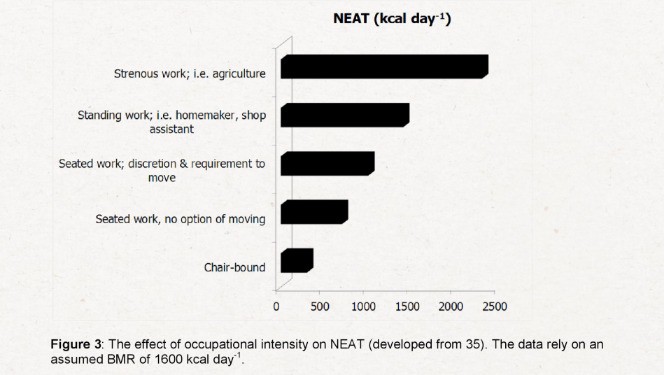
Now as shown from this 2014 paper, your NEAT levels can range anywhere from a couple hundred to over a couple thousand calories a day. That is, it depends on how active of a lifestyle you live and your occupation.
So to showcase where this becomes a potential problem, let’s say, at the start of their diet, someone:
- Burns about 2,500 calories a day AND
- Is an office worker
Based on the graph previously provided, this person burns around 1000 calories a day through NEAT. Now, if this person were to adhere to a cardio plan and improved their fitness throughout the weeks, their bodies would, in response, burn significantly fewer calories through NEAT.
And as we saw earlier, this could amount to a 15% calorie reduction. Meaning that NOW they are burning over 150 calories less per day from this effect alone.
Your Body Burns Fewer Calories Despite The Same Amount Of Cardio
This is why researchers believe this effect to be responsible for the reason why those who have lost quite a bit of weight struggle to:
- Keep that weight off OR
- Continue losing fat
...Despite still doing the same amount of cardio as they did in the beginning of their diet. Now when you combine this effect with the fact that most people just tend to:
- Move less in general as their diet prolongs AND
- Carry less bodyweight around
...You can see how these various factors cause you to burn fewer and fewer calories over time. And ultimately create a fat loss plateau. In fact, in the study mentioned earlier, by the end of the 10% weight loss, subjects were burning on average almost 600 calories less per day than they were in the beginning. And that's despite doing the same amount of exercise.
Admittedly, these subjects were fed a very low-calorie diet during the study. This probably didn’t help with their energy levels. Nevertheless, it still provides insight as to why the exact same cardio plan you started out your diet with which may have worked for a little while in terms of fat loss, will no longer be sufficient to continue stimulating fat loss as you continue to progress.
You Need To Design And Progress A Proper Cardio Plan To Lose Fat
Meaning that your cardio plan needs to be designed and actually progressed over time such that it accounts for this. Only then will it enable you to continuously break through any plateaus you’re bound to encounter along the way. But, at the same time, you don’t want to do too much too soon as that can be problematic as well.
So, how exactly do we go about doing that?
Well, we can do so with a 4 step cardio plan. This is a plan that I’ve personally used and implemented myself and with several others. Best of all? It accounts for all the problems that we previously discussed. I’ll honestly say that this plan was the easiest plan I’ve done this far. And it's enabled me, in a span of 12 weeks or so, to get down to not quite single-digit body fat but pretty much as low as I’d personally want to go nonetheless.
Step 1: Establish A Baseline Level Of Cardio
The first thing we need to do here is to establish a baseline level of cardio to start out with. And this amount should be the smallest amount of cardio needed to start seeing some fat loss progress. This will help set us up for success in the long run by giving us a lot more room to increase once we reach plateaus.
And ideally, you want the majority of the cardio you do to be low impact and low intensity. That's in contrast to high-intensity work. That's because low-impact, low-intensity cardio won’t impair your recovery as much. And, therefore, will enable you to do greater amounts of it with minimal risk of injury. The occasional high-intensity session is fine. But I’d limit this to no more than 1-2 times a week.
What I’d recommend though and what I personally started with was just 10 minutes of incline walking every single day, with just a:
- Low incline (e.g. 2.0 incline) AND
- Moderate pace (e.g. 3.5 mph)
...To start out. You can swap this for light cycling or any low intensity, low impact cardio modality if you prefer that instead. And these low-intensity sessions can be done in the morning, before and/or after your weights workouts, or in the evening for example. Just choose what you’ll be most consistent with.
This initial baseline level of cardio may not sound like much. But with all other variables held equal, it should enable you to start losing a bit of fat for the first few weeks. However, as I mentioned earlier, the rate of fat loss will inevitably slow down as your body adapts to this.
Step 2: Gradually Increase Your Cardio Sessions To Lose Belly Fat
This is why in step 2 we want to then very gradually start increasing the duration and/or difficulty of our cardio sessions. Since our body will be burning fewer and fewer calories from them as we continue to strip off fat.
And you can do this by either:
- Increasing the duration of these cardio sessions by 5-10 minutes each OR
- Increasing the difficulty of these sessions by increasing the speed and/or incline
As for when exactly to increase the duration and/or difficulty of your cardio sessions? You want to do this whenever you’ve reached a plateau. So let's say your weekly average weight has been the same for 2-3 weeks in a row. Now, this is a good sign that you should bump up the difficulty of your cardio sessions. This should help you break through that plateau. But again, you want to do this gradually.
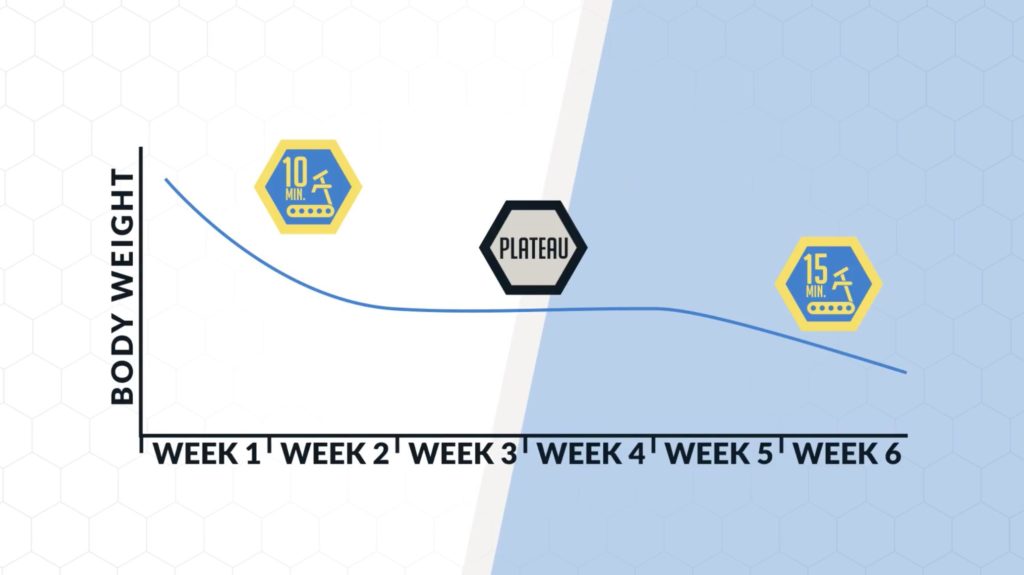
The Extent To Which You Increase Your Cardio Depends On Your Lifestyle And Target Leanness
What I found was that all I needed to do was increase the duration of my daily incline walking cardio sessions by just 5 minutes every other week. And that was enough to help me avoid reaching any fat loss plateaus along the way. So by the end of the 12 weeks, I was doing around 40 minutes of incline walking a day. Which I’d often just split into two 20 minute sessions.
Now, this may sound like a lot. But keep in mind that by the end of the 12 weeks I was around 7 or 8% body fat and VERY lean. Also, I honestly lived quite a sedentary lifestyle. The majority of you won’t need that long of sessions if you work an active job. And especially if you’re not even seeking to get that lean, as my belly fat came off well before that 12-week mark was hit.
The key here though is that you’re simply increasing your cardio very gradually over time. That's the thing that'll enable you to break through any plateaus you encounter. The extent to which you do so though will vary individually and depend on your lifestyle. And for these sessions, I personally brought my laptop to work on or would listen to podcasts and audiobooks. So be creative and try to keep yourself busy during the sessions! Doing so makes it a lot easier to stay consistent with and actually enjoy doing it.
Step 3: Keep Other Variables Consistent
Now, as you apply the above 3 steps you need to ensure that you’re not then compensating outside of these cardio sessions. Because as you diet down and get leaner and leaner, your body will start to get “lazier” outside of your workouts.
In fact, research has brought to light a phenomenon called the “constrained” model of energy expenditure. In average populations, as cardio levels increase, there comes a point where even though you’re burning more calories through your cardio sessions, the body fights back by compensating. It does so by:
- Not only becoming less active outside of that cardio session BUT
- Also reducing the energy costs of some of our other aspects of energy expenditure (BMR, TEF)
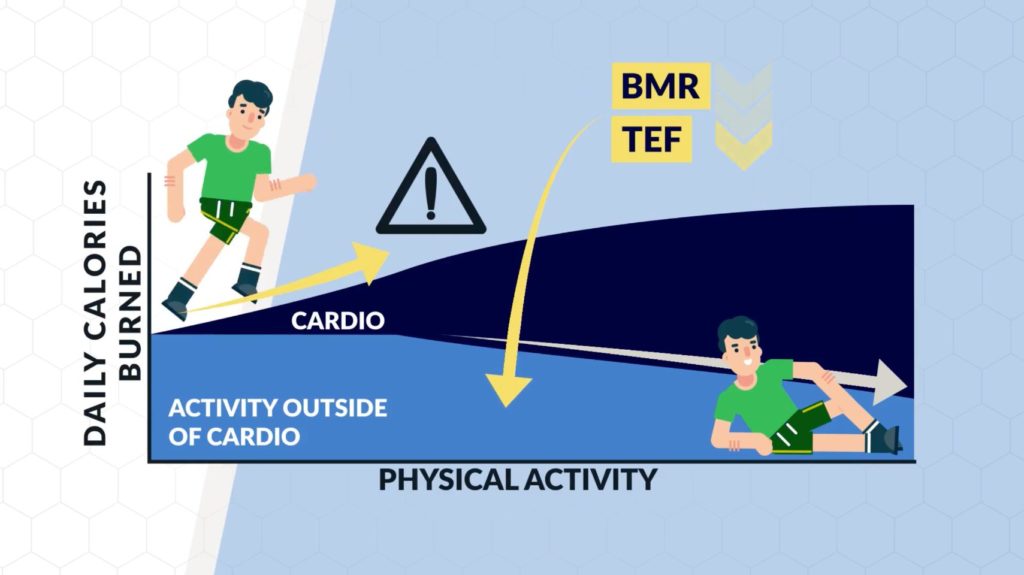
The 3 Variables You Need To Control And Monitor Other Than Cardio To Lose Belly Fat
Which again is where a lot of people get stuck even despite increasing the amount of cardio they're doing. So, to avoid this, you need to control and monitor 3 variables:
- Step count - Keep your step count consistent. This helps you more or less regulate your activity outside of your workouts and prevent it from declining.
- Weightlifting routine - Adhere to a regular weightlifting routine. This helps ensure you’re maintaining or even building muscle mass as you lose fat. Thus, helping you look better and slightly bump up your metabolism Also, research has actually shown that it seems to partially reverse the increase in muscle efficiency we experience as we get more fit and lose weight. And as a result, helps us burn more calories through NEAT. This is why using a weights routine in conjunction with cardio is so effective for fat loss.
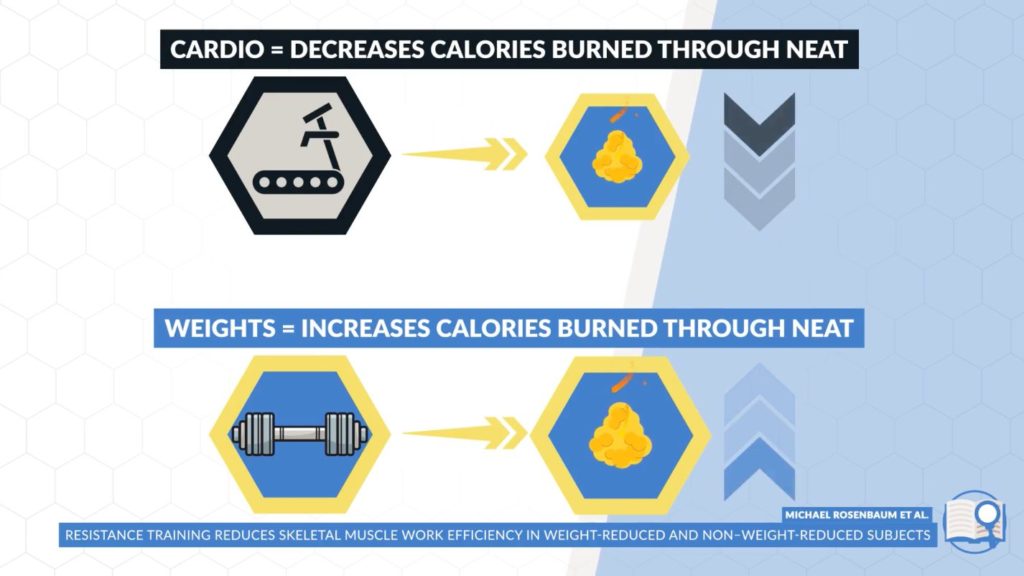
- Calorie intake - Ensure that you’re still adhering to a calorie deficit. Let's assume that you're burning an extra 300 calories a day with your cardio sessions. Yet, you compensate for this by eating an additional 300 calories when you get home. Then you’ve just undone the extra work you’ve put in. And won’t get past the plateau that you're in.
Find managing all these variables on your own overwhelming? Here's a secret: you don't have to go at it alone! Get more guidance with our 3-on-1 coaching program. You are going to have a coach who'll focus solely on your training and making sure you understand every single session of your customized workout plan. Plus, a dietitian and I will also be available to guide you every step of the way. If that sounds good to you, then:
Click the button below to find out more about the 3-on-1 coaching program:
↓
Step 4: Maintain
Now the last step here has to do with maintaining your new physique. Because if you immediately cut out the cardio you do once you reach your goal, you’re inevitably going to very quickly gain some body fat back. But, at the same time, if you’re doing an unsustainable amount of cardio that you know you can’t adhere to long term, then that’s no good as well.
Choose Between Two Options
So, what I’d recommend is one of two options:
- Option 1 - Find a consistent cardio routine that you can adhere to and stick to. It should be one that’ll enable you to maintain your new body weight and new physique with ease. For example, a 30-minute incline walk. Or cycling session in the morning. Or, just whatever you’ll be consistent with long term.
- Option 2 - Start tapering down the amount of cardio you do until your bodyweight stabilizes. In effect, what this does for many people is even though you’re burning fewer calories within your cardio sessions, your body actually then burns more calories outside of your cardio sessions through NEAT. That's as it doesn’t feel as fatigued or try to compensate by moving less outside of your cardio sessions.
It really does depend on the individual though. Not to mention, your lifestyle. But monitor your bodyweight closely to see how you can make the right adjustments to find a cardio plan or even a hobby that you can sustain long term while keeping your new physique intact. At the end of the day, it’s about:
- Burning sufficient calories AND
- Finding what enables you to do so with the most enjoyment and consistency
And on that note, ideally, this should be combined with something called a reverse diet. This is where you’re also at the same time gradually increasing your calories to continue boosting the energy you expend through NEAT and your overall metabolism. But that’s something I’ll cover more in-depth in another article.
How Much Cardio Should You Do To Lose Belly Fat: Summary
And that’s pretty much all there is to it! Start at a low baseline, slowly increase this overtime as needed, and then reverse back once you’ve stripped off that belly fat while keeping all other variables consistent, of course.
Step 1 (Baseline): Start at a low baseline level of cardio to kickstart the fat loss process.
Step 2 (Increase): In gradual increments, increase the duration/difficulty of your weekly cardio sessions every time you reach a plateau.
Step 3 (Control): Control all other variables and keep them consistent (weights routine, daily steps, calorie intake) to avoid compensating for your cardio sessions.
Step 4 (Maintain): After you’ve successfully stripped off the belly fat, find a routine that’ll enable you to maintain your new body weight and physique.
There really isn’t a magic number of how much cardio you should be doing. It will vary for everyone, but the key really is to use the least amount of cardio so that you have a lot of room to gradually increase this amount to enable you to continue stripping off fat until the fat loss finally reaches your belly.
Final Takeaway
Now on that note guys just keep in mind that you need to be pairing your cardio routine with a regular weightlifting routine and a solid nutrition plan, as these will both help speed up the process and ensure that you don’t just end up “skinny fat” by the end of your fat loss journey.
And for a step by step plan that shows you exactly how to do this by optimizing your workouts, nutrition, and cardio plan for you such that you can lean down as efficiently as possible with science, just like countless of our members have done with their Built With Science programs, then:
Click the button below to take my analysis quiz to discover the best program for you:
↓
I hope you enjoyed this article and now know how much cardio to do to lose belly fat! Don’t forget to give me a follow and connect with me on Instagram, Facebook, and Youtube as well, in order to stay up to date with my content.



